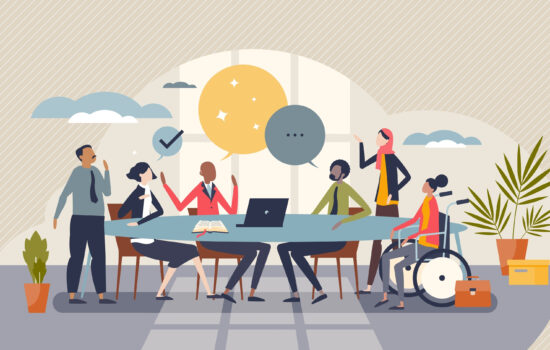Dressing well is important to many of us, no matter the event or venue of the occasion. Dressing well can be rewarding but it can be challenging for people with disabilities as they may encounter difficulty finding clothes that are both fashionable and easy to wear. Senior advocacy analyst Poh Sho Siam shares with us the different types of accessible clothing which not only looks good but offers comfort to the wearer as well.
Dressing well helps to increase an individual’s confidence which in turn enhances their emotional well-being. However, people with disabilities sometimes have difficulty finding clothes that are both accessible and fashionable. The ability to put on and take off their clothes easily is a major concern. Most would end up choosing a much larger piece of clothing so that it is easier to remove them. Comfort is also important for those who have to be seated all day such as wheelchair-users.
A number of designers have noticed this challenge and have started designing clothing for persons with disabilities that incorporate both functionality and aesthetics.
Canadian designer Izzy Camilleri began designing clothes for persons with disabilities after working with a client with quadriplegia (paralysis in four limbs) and realised that wheelchair-users do not have many options when it comes to fashion. Clothes that are sold off-the-shelf are mostly not designed to be worn while sitting down. These tend to ride up or down since they are not made for sitting the whole day.
She started designing pieces to suit the contour of a body in a seated position and which are also easy to put on and take off. Here are some examples:
Pants have a short front rise to reduce bunching and a high back rise so that they do not ride down.
.png)
.png)
Long zippers that can be unzipped completely from either the top or bottom are incorporated on the sides of pants.
.jpg)
Snap fasteners or Velcro allow pants to be ‘torn-away’, and elastic waist bands make for a better fit.
.jpg)
Open back pants fastened with Velcro may be put on while sitting down.
.png)
.png)
Coats are made based on an L-shape with enlarged bottom ends to cover the lap area while the backs are shorter so that the wearer does not sit on the coat.
.jpg)
.jpg)
Shirts have a slight A-Line cut to ease tightness around the waist area when seated.
.jpg)
.jpg)
Tops have overlapping flaps at the back which could be attached together by snap fasteners. Jackets have a zipper that separate the piece in two, allowing a wheelchair user to put on one side at a time then zip up to the top.
.jpg)
.jpg)
Magnets can be useful fasteners. Maura Horton’s husband has Parkinson’s disease and lacks the dexterity in his fingers to button up his shirt. This prompted her to start her own company selling shirts that are fastened by hidden magnets. As buttons are still sewed on the outside, the shirt looks like a usual buttoned shirt when the magnets stick together.
Shirt fronts and shirt cuffs fastened by hidden magnets allow wearers with the mobility of one hand or reduced finger dexterity to dress independently.
.png)
.png)
There are also clothes specially designed for persons with Down syndrome. Karen Bowersox created a clothing line to fit the unique body build of those with Down syndrome, whom often have a shorter stature. Karen’s granddaughter has Down syndrome and the family found it hard to find clothes that could fit her. Similarly, Ashley DeRamus, who has Down syndrome, launched her own fashion line specially tailored to fit females with Down syndrome.
‘Dip-down’ jeans solve the problem for those with a full figure in the front but do not like their pants pulled up around their waists. Jeans made of spandex material that come with an elastic waistband and no zippers (mock zipper) could come in handy for those who have difficulties with zips and buttons.
.jpg)
Ashley DeRamus’ fashion show featuring clothes for girls with Down syndrome.
.jpg)
With more designers making clothes that are accessible, comfortable and stylish for persons with disabilities, they could make a positive impact in helping persons with disabilities restore independence, project a positive image and increase self-esteem.
References include Ashley by Design (UK), CNN ‘Fashion-able: Innovators tackle clothing challenges for people with disabilities’; 3 Aug 2015, Downs Designs Dreams (US), Federation for the Humanities and Social Sciences ‘People in wheelchairs express frustration with clothing’; 3 Jun 2015, IZ Adaptive (Canada) and MagnaReady (US).





